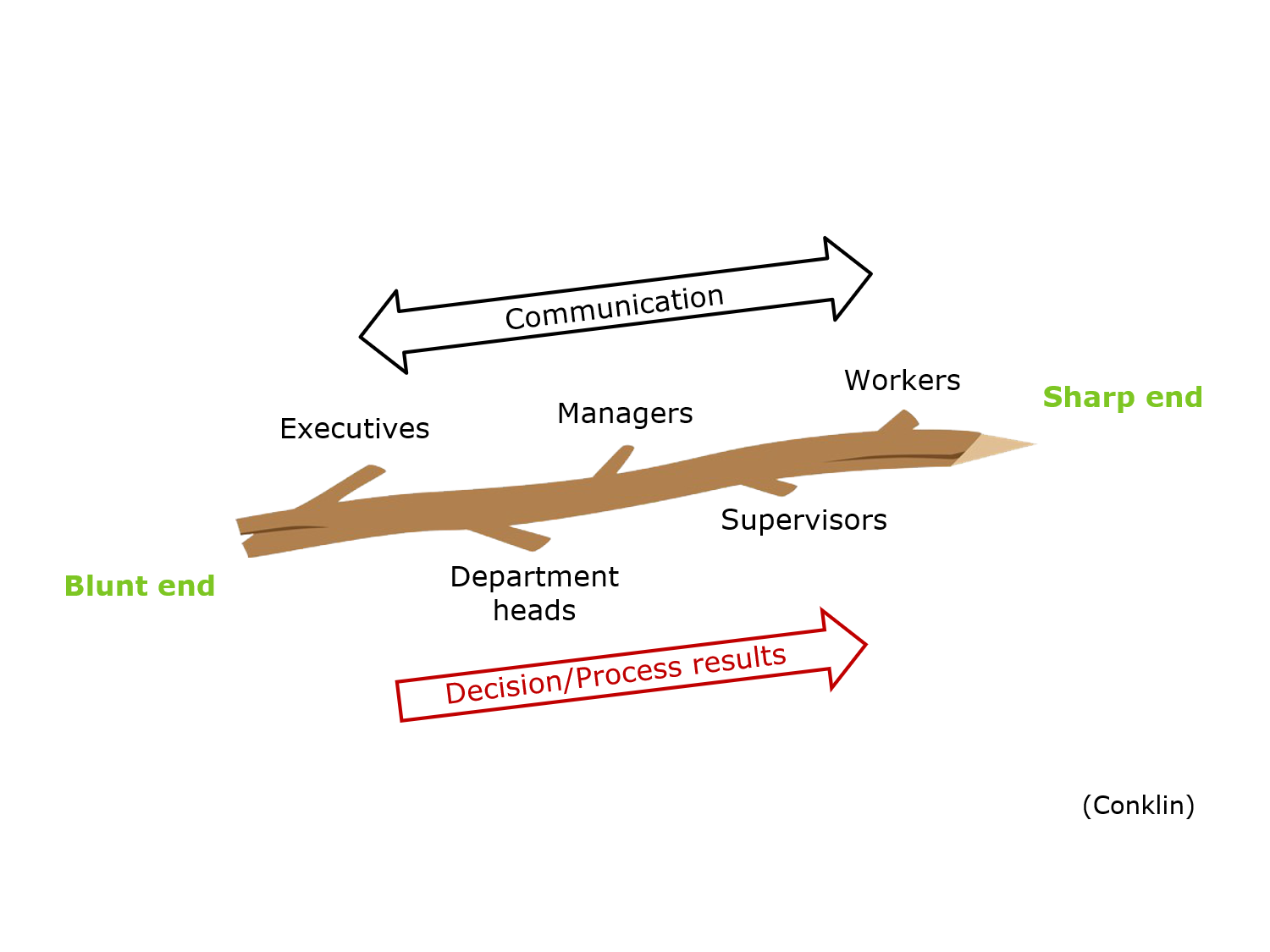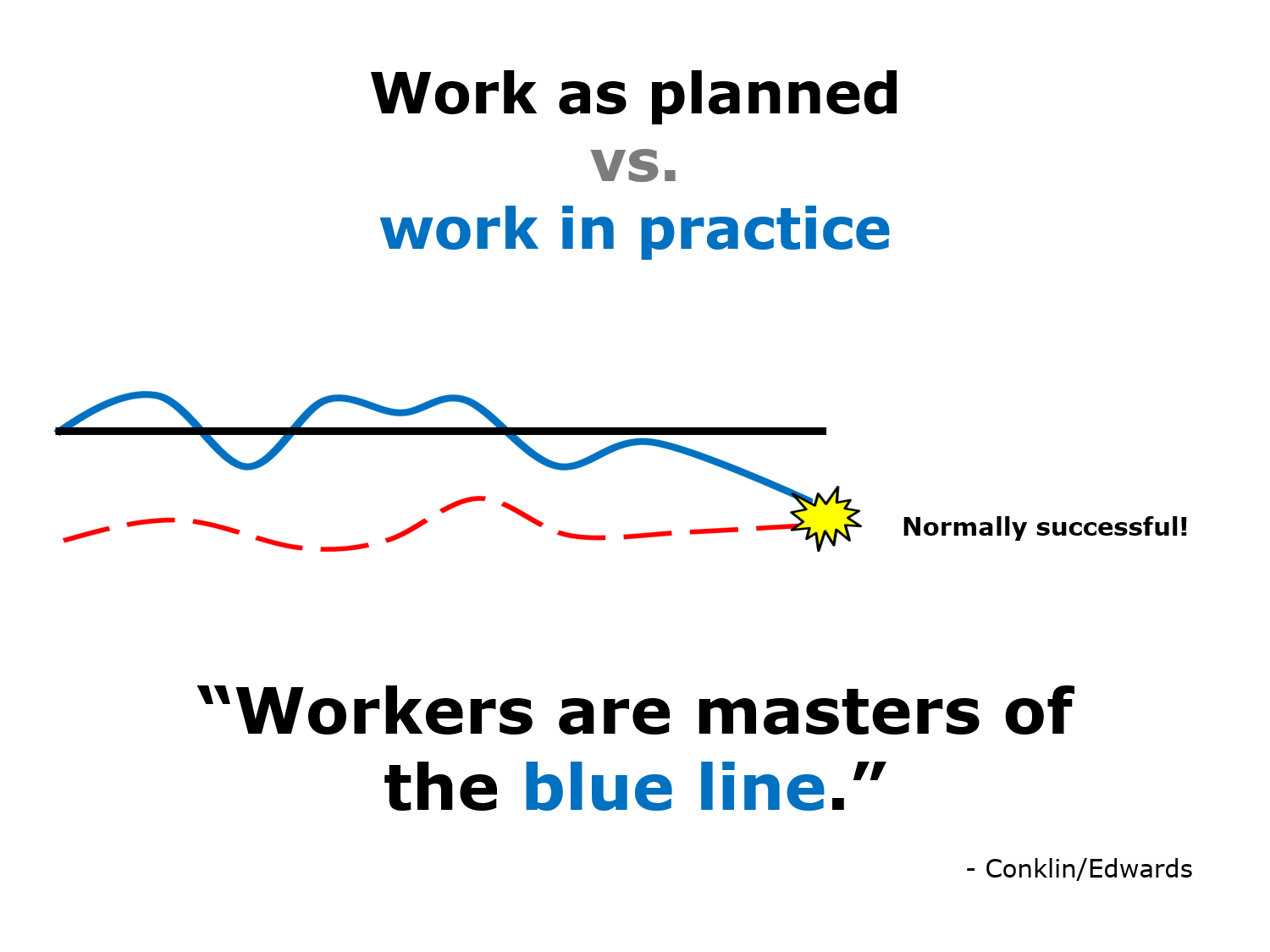Human and Organizational Performance (HOP): another way to think about safety
This resource is part of SAIF’s leadership project, which is meant to help employers and leaders of organizations establish strong and sustainable safety cultures using research-based concepts and strategies.
Human and Organizational Performance (HOP) is a science-based approach to looking at mistakes so we can address them more effectively. It builds an understanding of how humans perform and how we can build systems that are more error tolerant.
Let's start with a story
A press operator was using a Komatsu 80-ton press when it jammed. A metal washer was jamming the chute, so the operator asked another machine operator to come over and help him troubleshoot the problem. The operator thought the machine was off. In fact, he and his co-worker had shut down the press, but the infeed still had stored pneumatic energy. He was not an authorized lockout/tagout employee, nor did he have any lockout/tagout training. The company did not have any written, machine-specific procedures to safely shut down and lockout the Komatsu 80-ton press.
While his co-worker was looking for the cause, the press operator touched the stuck washer with his right index finger. This caused the infeed to suddenly push down two more inches of product, which amputated his finger at the first knuckle.
How HOP can help
In this case, it’s tempting to point to human error as the cause for the accident. Wasn’t it the employee who touched the washer? But this is actually a great example of how HOP principles help us look at the incident differently. Here are the five principles of HOP, according to Todd Conklin:
- People make mistakes: It’s a normal part of being human. Designing systems that can withstand errors prevents injuries.
- Blame fixes nothing: Thought leaders have long known about the corrosive nature of blame, yet it is still a common reaction to workplace incidents.
- Context drives behavior: Context is the circumstances that form the setting for an event, such as fatigue, production demands, or broken equipment. For every workplace injury, various circumstances lead to the behavior that resulted in the injury.
- Learning and improving are vital: The whole point of analyzing workplace injuries is to prevent them from happening again, but many organizations see the same types of injuries over and over.
- How leaders respond to failure matters: What happens at your organization when things go wrong? Is failure seen as an opportunity or a precursor to an organizational shakedown?
In this case, the employee made a mistake, but he did so in the context of the work. He believed the machine was shut down when he touched the washer and had no training to know there was stored energy at play. Can we learn from this incident? Here are two more key points in HOP:
“Sharp end” of the stick
The sharp end of the stick refers to where the rubber meets the road—more specifically where the day-to-day work gets done. This is often the highest risk area, where employees are most likely to get injured. Employees have the most to lose and the least influence over their work tasks.

The concept is useful for HOP because involving those employees in problem solving is a great way to prevent injuries. Who better than the employees doing the work to come up with ideas for improving it?
Black line/blue line
The black line/blue line model is a great way to look at how work is performed at the sharp end of the stick. The black line represents the way a job is planned, if everything works perfectly. But we don’t work in a perfect world; we work in one where choices are made every day to modify the plan when something changes. That’s the blue line— the way work is really done. The red line is the potential for an injury to occur. What happens when the employee modifies the work and runs into the red line? An injury.
The concept is useful for HOP because we need to think about how work is done instead of writing rules about how it should be done. Developing systems that can prevent injuries when things don’t go according to plan is a cornerstone of HOP.

Conclusion
When injuries happen, and they will, blaming the injured employee should be avoided in favor of managing work processes to make it harder to get injured and easier to work safely. Most importantly, we can learn from every event and involve employees in generating ideas. Seeing employees as “problem solvers” is a key HOP strategy that can pay off in reduced injuries and increased employee engagement.
This elearning describes a way of leading safety by engaging employees:
- eLearning module (20 minutes)
For more on this topic, visit saif.com/learntolead.

